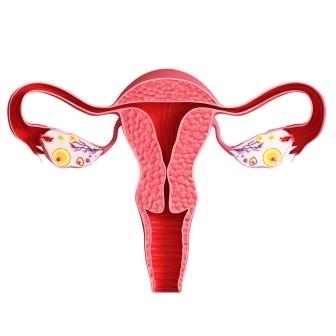Uterine cancer
Symptoms and causes
Symptoms and causes
What is it?
The uterus, vagina (vulva), ovaries and fallopian tubes belong to the woman's internal genitalia. They are located in the lower part of the abdominal cavity (the small pelvis). The small and large labia, the clitoris and the entrance to the vagina belong to the external genitalia.
The uterine body has the shape and size of an inverted pear. The main function of the uterus is to implant a fertilised embryo. The embryo grows into a foetus and stays there until the baby is born.
Uterine cancer and cervical cancer both originate in the uterus. They do have a very different cause and progress of the disease. The treatment of these two diseases is also different. Unlike cervical cancer, almost all cases of uterine cancer are of the adenocarcinoma type that develop in the glandular tissue. If the cancer originates in the uterine muscle wall, it is usually a uterine sarcoma. A sarcoma is a very different type of cancer.
Symptoms
Unusual vaginal bleeding is often the first symptom. In 85% of cases, the first symptom is bleeding that happens after menopause. In 15% of the cases, menstrual irregularities during the menopause indicate a problem. Problems can also arise with urination or bowel movements.
Diagnosis and treatment
Diagnosis and treatmentTreatment of uterine cancer depends on the extent of the disease and the general condition of the patient.
The treatment may consist of:
Treatment centres and specialisations
Treatment centres and specialisations
Latest publication date: 02/08/2024
Supervising author: Dr. Verschueren Eva
Something wrong or unclear on this page? Report it.
Supervising author: Dr. Verschueren Eva









